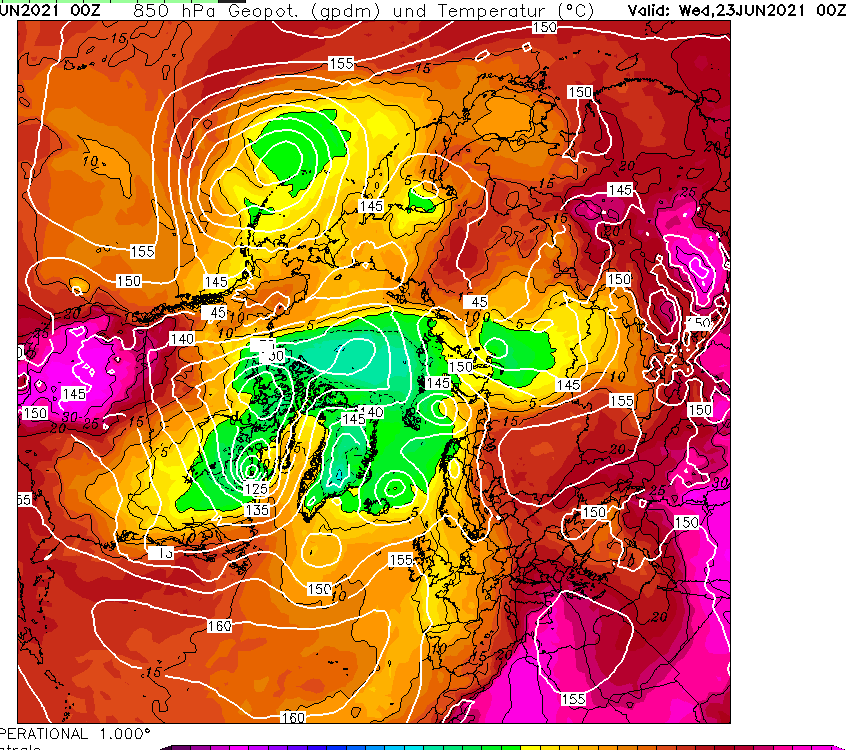Compiling a list of sunless, rainy days revealed some interesting spells of wet weather – the most miserable runs of June days in the capital since 1959.
First up was a three-day spell starting on June 25, 1974. Some 34.3mm of rain was recorded.


Next was a three-day spell starting on June 23, 1991. Some 26.3mm of rain was recorded.


Another three-day spell started on June 25, 1997. Some 36.2mm of rain was recorded.


Finally, and most recently, a two-day spell this month that began on June 17th. Some 28mm of rain was recorded.


The above spells all happened around the date of the ‘June monsoon’ singularity which has a probability of 77 per cent. Though the fact that these occurred 47 years, 30 years and 24 years ago shows that these extreme cases happen a lot less than three years in every four the singularity would suggest.
Comparing the current Northern Hemisphere pattern with 1974 suggests that while there’s just as much heat around at 850mb as there was 47 years ago, including an extreme heatwave over some Nordic countries, the air above Greenland appears colder.












 : 9.1C (1.1C below average, coldest since 2013, 111th coldest) Rain
: 9.1C (1.1C below average, coldest since 2013, 111th coldest) Rain  : 113mm (84% of average, wettest since 2018, 150th wettest ) Sun
: 113mm (84% of average, wettest since 2018, 150th wettest ) Sun  : 425.4 hrs (94% of average, dullest for three years. 51st dullest) The average masked extremes.
: 425.4 hrs (94% of average, dullest for three years. 51st dullest) The average masked extremes.
You must be logged in to post a comment.